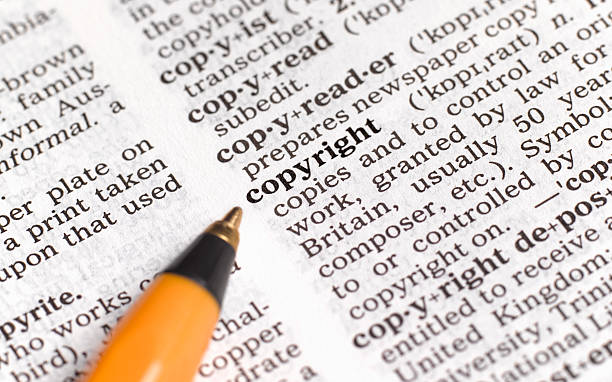The terms ‘font’ and ‘typeface’ essentially refer to two similar concepts in the sense that a typeface is the specific presentation or design of letters and numbers, and a font refers to the various factors such as size, color, and style that are variable to the typeface. The difference between the two are therefore technical in nature and the terms are sometimes used interchangeably.
[Image Source: gettyimages]
The relevance of fonts and typefaces under the Copyright and other allied laws needs to be studied in reference to Section 2(c) of the Copyright Act, 1957 which defines “artistic work” as (i) a painting, a sculpture, a drawing (including a diagram, map, chart or plan), an engraving or a photograph, whether or not any such work possesses artistic quality; (ii) a work of architecture; and (iii) any other work of artistic craftsmanship.
While on the surface it might seem that the presentation and design of letters or the ‘typeface’ include artistic craftsmanship, the legal stance has been rather conservative. The only prominent case dealing with the copyrightability of fonts and typefaces is Aananda Expanded vs. Unknown (2002). In this case, four copyright applications for fonts were submitted to the Copyright Office for registration. The Registrar rejected the application stating that typefaces did not qualify as artistic works. However, on appeal to the Calcutta High Court, the Registrar was directed to hear the applicant and then pass any orders.
The applicant contended that a significant amount of labor and skill were employed in the making of the fonts, and the work reflects sufficient originality and artistic craftsmanship. The registrar, however, rejected the application broadly on two grounds:
- 2(c)(iii) of the Copyright Act follows the ejusdem generis principle, and therefore “any other work of artistic craftsmanship” needs to be construed with regard to Sections 2(c)(i) and 2(c)(ii). Due to this restriction, typefaces cannot be covered under Copyright Law.
- Copyright protection cannot be extended to works that are not explicitly covered under the Copyright Act, 1957. As there is no term of protection given to typefaces, there was no legislative intent to protect them as copyright. There needs to be legislative intervention for the protection of such applied artworks. Moreover, none of the international copyright conventions cover typefaces.
The Registrar did however note that typefaces can be protected as ‘pattern’ under the present-day Section 2(d) of the Designs Act, 2000. Section 15(2) of the Copyright Act places a restriction that designs with a copyrightable element, which is not registered under the Designs Act, can be reproduced only fifty times. Post this, the copyright in such works ceases to exist. Due to this restriction, the Registrar observed that copyright would no longer exist in the present case even if it were to be accepted that typefaces are copyrightable for the sake of the argument. In effect, what this means is that it is much preferable to register a typeface under the Designs Act, as the copyright law only permits fifty reproductions of design works with a copyrightable element. The judicial progress with respect to fonts and typefaces halted in 2002 with the decision in Aananda Explained.
Do any countries recognize fonts and typefaces as copyright?
The global position on this matter is non-uniform. The United States for example does not protect typefaces under copyright law due to the inherent inseparability (‘separability test’) of typefaces from their utility in the language (Scaria and George, 2017). There do exist alternative solutions to protect fonts in the form of design or software licenses. In the latter, the font itself is not protected, but the font software or program is. The developers of such software allow the users to install it as per a license that specifies the conditions of use. Therefore, the fonts are protected insofar as they qualify as computer software (which is often the case).
The United Kingdom, on the other hand, provides protection to typefaces as artistic works under the Copyright, Designs and Patents Act, 1988. Exceptions similar to those of fair use are also provided specifically for the use of typefaces such as using the typeface in the ordinary course of typing, printing, composing the text, etc. The Irish Copyright Law also provides similar protection to typefaces.
While some other countries have provided protection to typefaces, the majority do not have the necessary legal protection for them.
Conclusion
Despite the decision in Aananda Explained, it does not mean that typefaces have no element of craftsmanship. A fresh examination of the issue is required, as the Registrar’s reasoning seems too mechanical and dated for the interpretation of copyright law. The Copyright Act does not prescribe a technical analysis of the work in order to qualify for copyright, and the standard thus set is that of an original creative/artistic expression. An argument against this could be that there are far too many fonts and typefaces that have similar elements, which makes the determination of original creative expression difficult. While this may be true, copyright may still be granted to typefaces on a case-to-case basis where there is clear proof of originality and creativity. Therefore, fonts and typefaces can well enough satisfy the requirements of copyright protection due to the labor, skill, and artistic creativity required in their development.
Author: Tamish Kumar – a student of Symbiosis Law School, currently an intern at Khurana & Khurana, Advocates and IP Attorneys. In case of any queries please contact/write back to us at sudhanshu@khuranaandkhurana.com.




